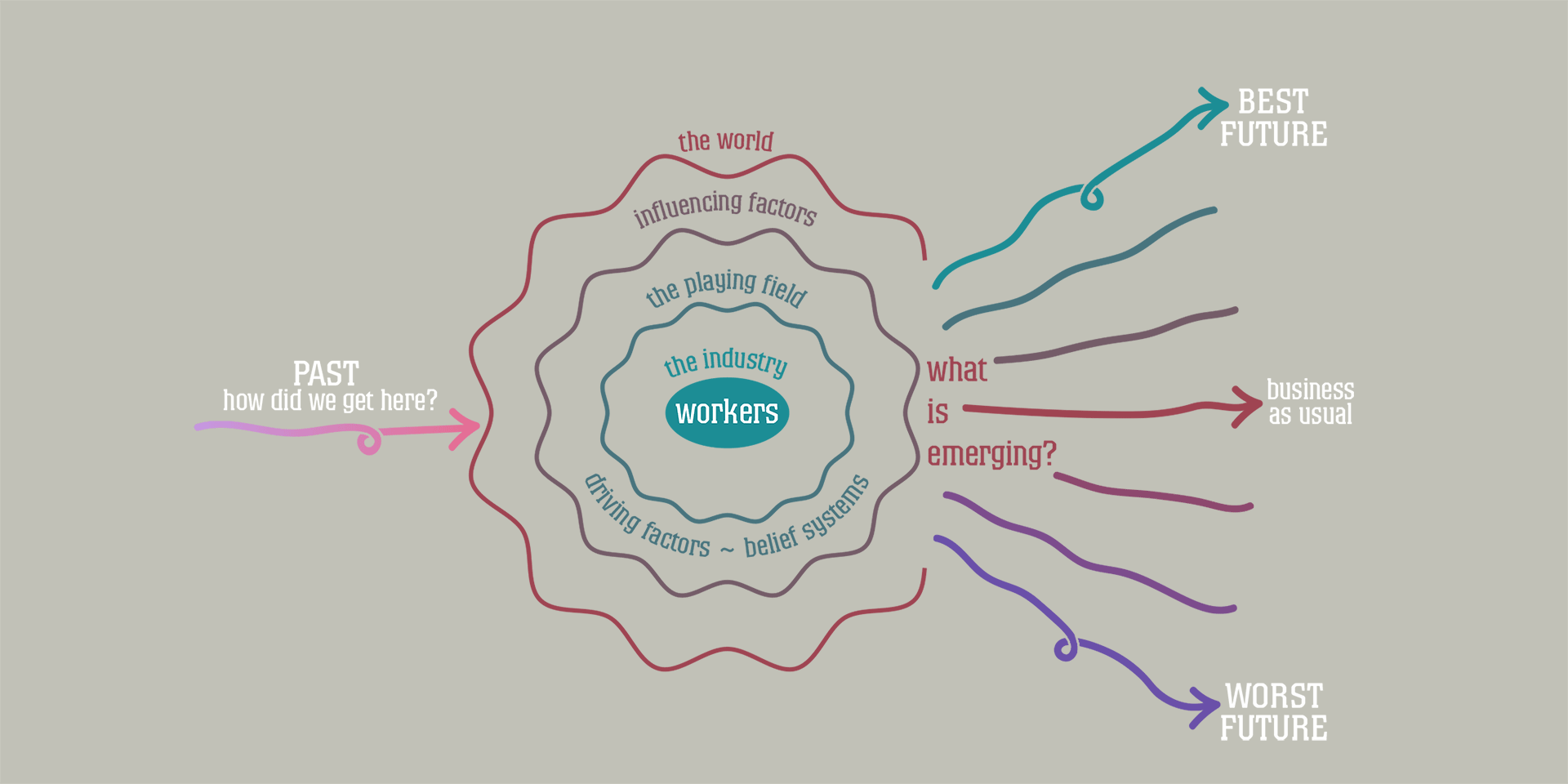Why The Threads?
The staff behind The Threads share the frustration about the slow progress towards a better garment industry – but we also see an emerging consensus that the status quo is simply untenable. Out of that consensus, we see opportunities for the people and organisations working in this field to become far more effective in their work – but only if some critical and fundamental questions can be dealt with. We created The Threads to help that process of discovery and reinvention by sharing some of the most innovative thinking we can find with professionals like you.
Looking back at the last 20 years of work, we find all too often that reports and presentations end with the not-very-helpful conclusion that fixing the industry is complicated. Since it’s complicated is still the endpoint of much of the thinking on the garment industry, it seemed the best way to make The Threads useful was to take it’s complicated as our starting point.
What does that mean in practice? To begin with, it means looking at the garment industry as a complex, international system that will require interventions at multiple points in order to change it. The seven thematic ‘threads’ that define The Threads apply to actors up and down the supply chain. And if other efforts to change complex systems have shown anything, it is that knowing what is happening isn’t enough; you need to understand why people and organisations behave the way they do, and ultimately what beliefs, rewards and deterrents influence their actions. There are some excellent resources out there documenting what is happening in the industry, but we see a need for more consideration of the whys.
Most of the people working to change the garment industry are involved in implementing some type of intervention – be it factory audits, CSR trainings, consumer education, worker organising, drafting of legislation, complaints handling, or any number of other efforts on behalf of some type of industry stakeholder. And while we are certain that workers would be worse off without those efforts, we also think most of us in the field would acknowledge, at least privately, that very few of those interventions are anywhere close to being as effective as they were intended to be.
Why is that? Well, yes, part of the answer is it’s complicated. But lots of solutions are complicated, and they still get implemented – primarily because the design of the interventions suit the nature of the problem. When it comes to fixing the garment industry, however, there is a growing awareness that the designs of the interventions often do not suit the nature of the problem. So our goal here at The Threads is to help our readers figure out how their interventions interact with the garment industry as a deeply problematic system – and whether the logic of those interventions as they currently exist can influence beliefs and behaviours of the relevant actors in the industry.
To do that, we plan to share insights from a wide range of experts whose work can help us all move past it’s complicated. To help ensure that The Threads content is relevant, we have identified five points that form our ‘editorial guide:’
Globalisation changes everything: The ways that civil society, business ethics, social dialogue, public and private regulation can effectively function under globalisation are still emerging. Solutions from a pre-globalised world often don’t work anymore, so we hope to share ideas about how those solutions can be adapted, or replaced by something fit for new realities.
The simple and obvious solutions are usually wrong: This is a systems analysis concept that is particularly true in the garment industry. We are deeply suspicious of any solution formulated “Stakeholder X just needs to do Action Y, and then Problem Z is solved” – especially when there are lots of assumptions about why Stakeholder X is doing Action Y in the first place. But we hope to provide insights that might open up effective, if more complicated, pathways to change.
Multidisciplinary problems require multidisciplinary solutions: Solutions to garment industry problems are going to involve everything from economics to chemistry to labour relations to politics, with a dozen other fields in between. Whatever your field, we hope to give you insights into what’s happening the next field over, from experts who you might not normally get to meet.
Let’s look at the data: Quality research on intervention efficacy and data about what’s happening in the garment industry has historically been very thin, but a new generation of research is emerging that should help guide practitioners in the field. We’ll be sharing insights from a range of researchers, building a bridge between research and practice.
A mismatch exists between intervention supply and intervention demand: Interventions are shaped by local and national political considerations, donor priorities, and other factors that are often out of sync with the actual needs of the industry, leading to duplication in some areas, gaps in others, and a lack of coordination. We’ll be looking at questions of how supply and demand for interventions can be better matched.
If those points sound interesting to you, then we invite you to keep following The Threads, and to share it with your colleagues.


